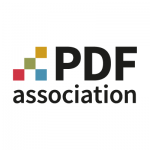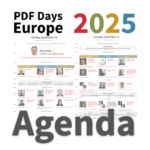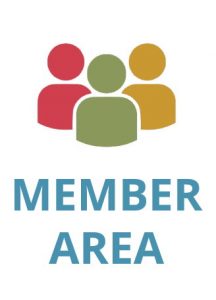ISO 14289-2 (PDF/UA-2), the “gold standard” for accessibility in PDF 2.0, has arrived

The PDF Association staff delivers a vendor-neutral platform in service of PDF’s stakeholders.
BUSINESS NOTE
Ensuring that documents are accessible to users with disabilities is good business, but it’s also increasingly the law. Many countries and industries are mandating that various classes of documents must be accessible. PDF/UA-2 is the ISO standard that specifies how to achieve fully accessible PDF 2.0 files.
Reflecting the PDF Association’s new (and freely-available) WTPDF specification, ISO 14289-2 provides institutions seeking accessibility solutions with the assurance that complete requirements for creating and validating accessible PDF 2.0 files are now ISO-standardized.
While ISO 14289-2 must be purchased, WTPDF is freely available by the PDF Association.
Background
PDF/UA-1, introduced in 2012 and last revised in 2014, provided accessibility requirements based on ISO 32000-1 (PDF 1.7). Since its release, PDF/UA-1 has been broadly implemented in software and is both referenced directly and implied in regulations around the world.
ISO 32000-2 (PDF 2.0) was released in 2017 and updated in 2020, with numerous enhancements relevant to Tagged PDF, the mechanism in PDF that facilitates accessibility. WTPDF, published in February 2024, defined these accessibility requirements for PDF 2.0. Today, ISO 14289-2 elevates these same requirements to an International Standard.
About ISO 14289-2
Besides providing accessibility rules specific to PDF 2.0 files, compared to ISO 14289-1 the new ISO standard includes a variety of enhancements to core requirements for tagged PDF, including:
- comprehensive requirements for structure element attributes;
- comprehensive requirements for the use of annotations;
- examples of semantically-significant attribute usage.
 WTPDF and PDF/UA-2 introduce other enhancements to accessibility requirements leveraging improvements in the underlying PDF 2.0 format, including:
WTPDF and PDF/UA-2 introduce other enhancements to accessibility requirements leveraging improvements in the underlying PDF 2.0 format, including:
- comprehensive requirements for the new structure element types introduced in PDF 2.0;
- rules governing the inclusion of structure elements defined in PDF 1.7 as well as PDF 2.0;
- detailed requirements for math, including support for MathML;
- requirements for intra-document links leveraging the structure destinations feature;
- the use of the Associated Files feature to facilitate the integration of non-PDF content.
The document’s normative requirements were developed by the PDF Association’s PDF/UA Technical Working Group (TWG) and PDF Reuse TWG in conjunction with ISO TC 171/SC 2/WG 9, the body responsible for ISO 14289-2.




